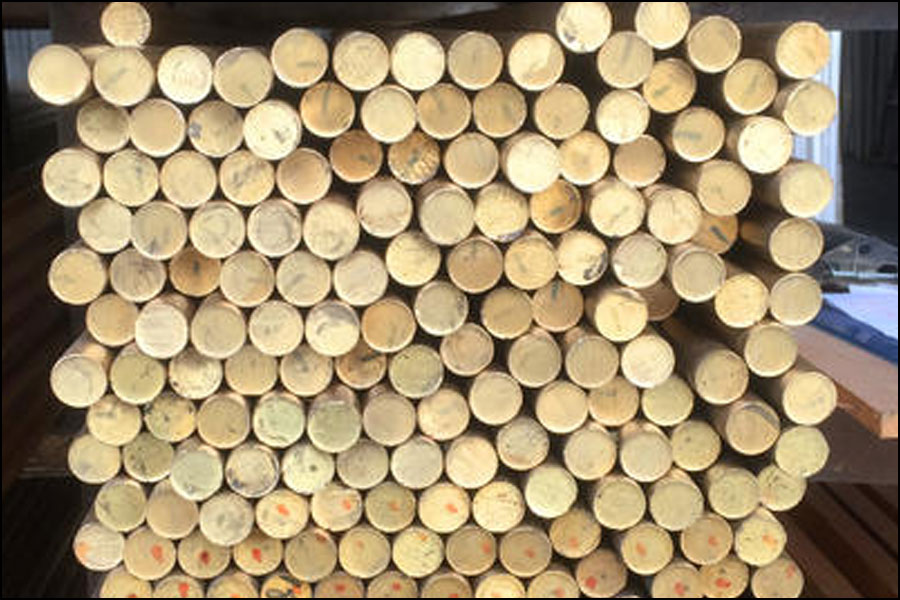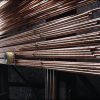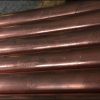
1. Atmosphere of beryllium copper heat treatment flame heating furnace
It is an old general heat treatment method, which uses incineration heating such as coal gas as fuel. The atmosphere in the beryllium bronze heat treatment furnace has: oxidizing atmosphere, that is, the fuel is burned in the case of excess air, so that there is more oxygen in the furnace. In the process of restorative atmosphere incineration, there is a lack of air in the furnace, and CO and CO2 are more due to insufficient combustion of fuel. The neutral atmosphere is the atmosphere between oxidation and recovery in the furnace. The micro-oxidizing atmosphere contains a small amount of oxygen in the furnace, which has a certain oxidation effect.
The control of the atmosphere in the beryllium bronze heat treatment furnace is based on the nature of the alloy and the skill requirements. Copper and copper alloys generally do not need an oxidizing atmosphere, because not only the appearance quality is damaged, the oxidation burn is large, and the low melting point components in the alloy, such as SnPbZnCd, etc., are simply evaporated (commonly referred to as dezincification). Therefore, most of the furnace atmosphere is restorative or neutral. For alloys that simply absorb hydrogen to cause “hydrogen embrittlement” and sulfide during heat treatment, micro-oxidizing atmospheres are generally selected, such as nickel-containing alloys, pure copper, etc. The flame heating furnace will now be gradually replaced by an annealing sheath that is heated by electric heating and maintenance gas.
2. Beryllium copper heat treatment maintainability atmosphere
Due to the advancement of sealing skills and maintenance gas production skills, heating in a maintenance atmosphere is now mostly used. The maintenance gas composition request does not react with the alloy during heating; it has no corrosive effect on the parts of the furnace, thermocouples, and resistance devices; the composition is stable, the production is simple, and the supply is convenient.
Electric heating methods are mostly used for maintenance atmosphere heating. It is a continuous annealing furnace that uses electric induction heating after the 1990s. It uses a maintainable atmosphere and forced circulation air type online annealing, which simplifies the process and improves the appearance quality and production efficiency. In the past, the maintenance atmosphere of beryllium bronze heat treatment was to select nitrogen, carbon dioxide, purified gas after gas incineration, or water vapor. Due to the poor sealing of the furnace, low maintenance gas concentration and high cost factors, satisfactory results were not obtained. Today’s maintenance gas composition is mainly nitrogen and hydrogen. It is particularly effective for brass to use different nitrogen and hydrogenation maintenance according to different alloys. Since the thermal conductivity of hydrogen is 1.7 times that of nitrogen, it can greatly increase the heat transfer rate. After hydrogenation, the heating time can be shortened, especially under the effect of strong wind, the convection heat transfer effect is very good, so that the annealing material is heated uniformly, and the uniformity of the heat treatment arrangement of the beryllium bronze is ensured. Under the effect of the strong wind, the volatiles of the lubricant are taken away, and the appearance quality of beryllium bronze products is improved.
3. Vacuum heat treatment of beryllium copper
It is an annealing method in which the material space is vacuumized during annealing and heating, and the annealing material does not touch any medium. There are two methods for vacuum annealing: external heating and internal heating. The external heating element is placed on the outside of the furnace, and electric heating is selected. The external heating vacuum furnace has a simple structure, simple production, and convenient charging and discharging. However, the heating is slow, the heat loss is large, and the furnace life is low. In the internal heating type, the heating element is in the furnace, and the heat treatment materials are also placed in the furnace. Tungsten, molybdenum, graphite and other materials are often used as heating elements. It is characterized by fast heating, high heating temperature and long furnace life. However, the structure of the furnace is messy, the investment is large, and the temperature is slow. When vacuum annealing is used, pure copper is selected (10–?——10-?)*133.3Pa, and most copper alloys use (10–?——10-?)*133.3Pa vacuum. During vacuum annealing, when the material is discharged from the furnace, the temperature must drop below 100 degrees Celsius to damage the vacuum and avoid oxidation of the annealing material. In recent years, vacuum annealing is not recommended for the heat treatment of beryllium bronze. Because vacuum is a poor conductor of heat, it only relies on thermal radiation to transfer heat, especially for materials with bright appearance, which is even more difficult to heat by radiation. In addition to low thermal efficiency, it is difficult to obtain heat-treated products with uniform functions. Therefore, it is gradually replaced by maintenance atmosphere and air cushion type successive annealing.






